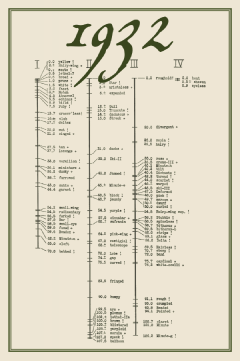 |
 |
The New Synthesis
In 1900 the scientific community's acceptance or rejection of Darwin's theories was unresolved. By 1932 the linking of genetics, statistical analysis of the growth of populations, and studies [or experiments] on the mechanisms of cellular reproduction led to a new understanding of the mechanisms of evolution. The modern understanding of the mechanisms of selection and evolution was called Neo-Darwinism or The New Synthesis. These discoveries were the missing link in solidifying Darwin's ideas as vetted scientific theory. The revolution came about, as articulated by John Haldane in his book The Cause of Evolution (1932), because: "The rising generation of biologists, to which I belong, may now claim to make its voice heard. We have this advantage at least over our predecessors that we get no thrill from attacking either theological or biological orthodoxy; for eminent theologians have accepted evolution and eminent biologists denied natural selection." These key discoveries helped evolution become a separate discipline of biology, rather than a sub-area. With this new field of study came new terms like: genetic drift, founder populations, mutation pressure, and selection pressure. Evolutionary biology took another turn in 1953 with the understanding of the purpose of the structure of DNA. This discovery was the advent of molecular biology where the changes in the "information" that is transmitted between generations could now be described exactly. Finally the exact similarity or dissimilarity of two different individuals of a species could be described. Additionally, new measures of relatedness between species could be calculated allowing theoretical calculation of the rate of changes of individual gene sequences. Darwin's insights of almost 100 years earlier reinforced the significance of the discovery of the function of DNA. Man shares not just common ancestry with all life on earth but also a common genetic material. | ||||
| ||||

 Click Image to Zoom
Click Image to Zoom






 The rising generation of biologists, to which i belong, may now perhaps claim to make its voice heard.
The rising generation of biologists, to which i belong, may now perhaps claim to make its voice heard.